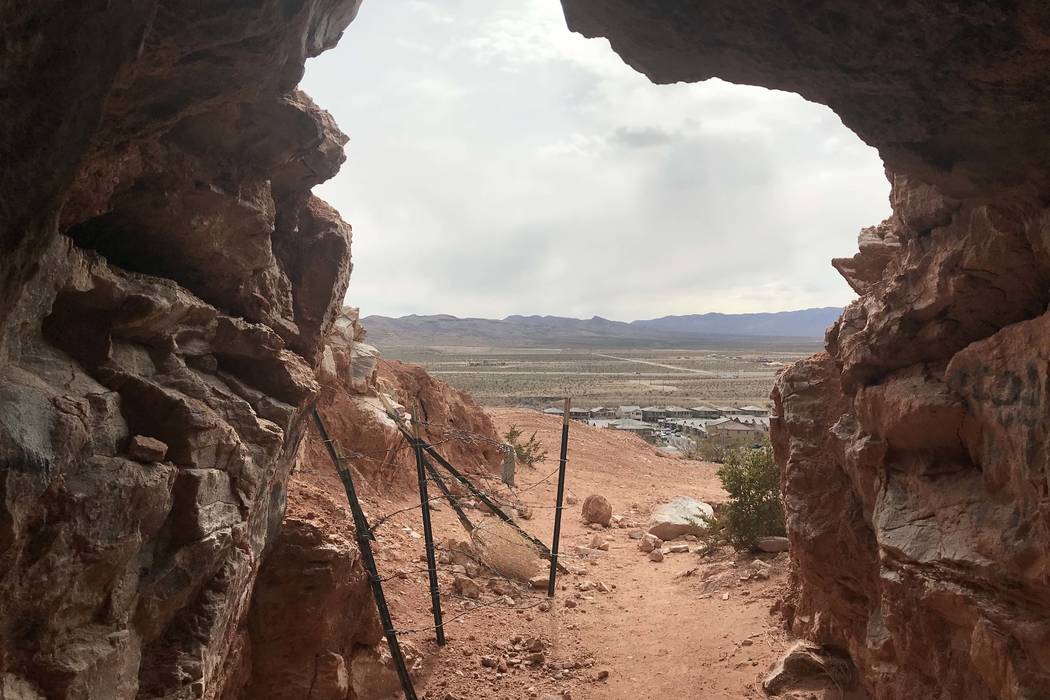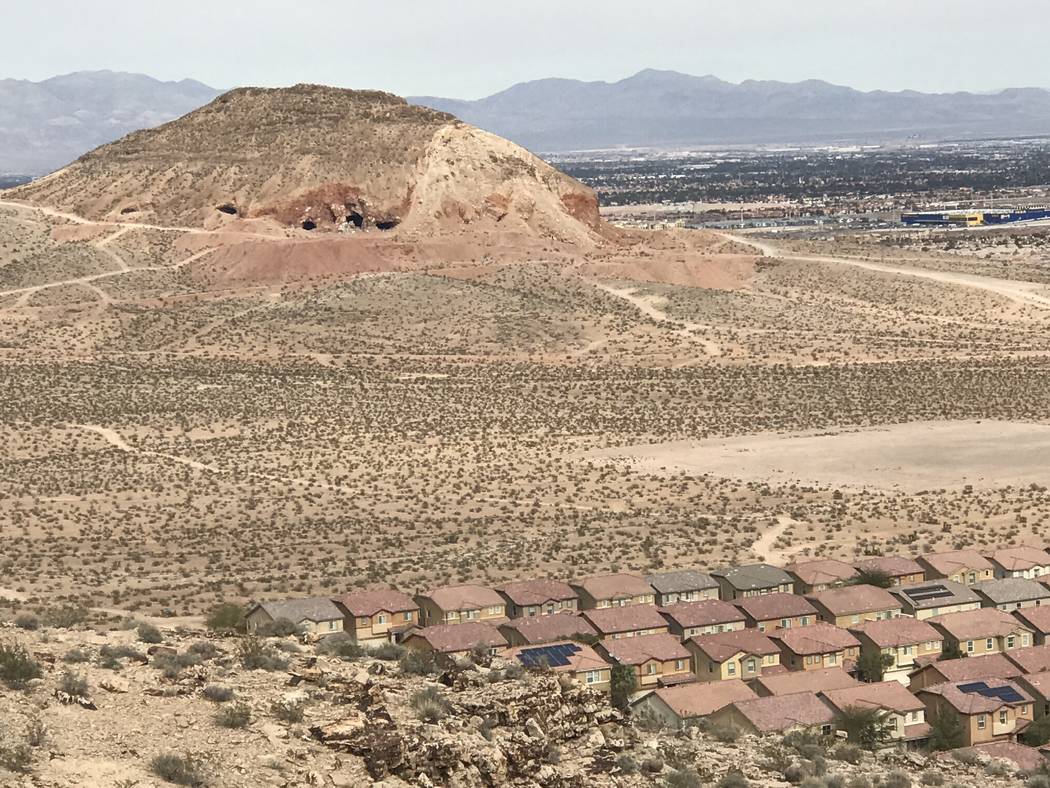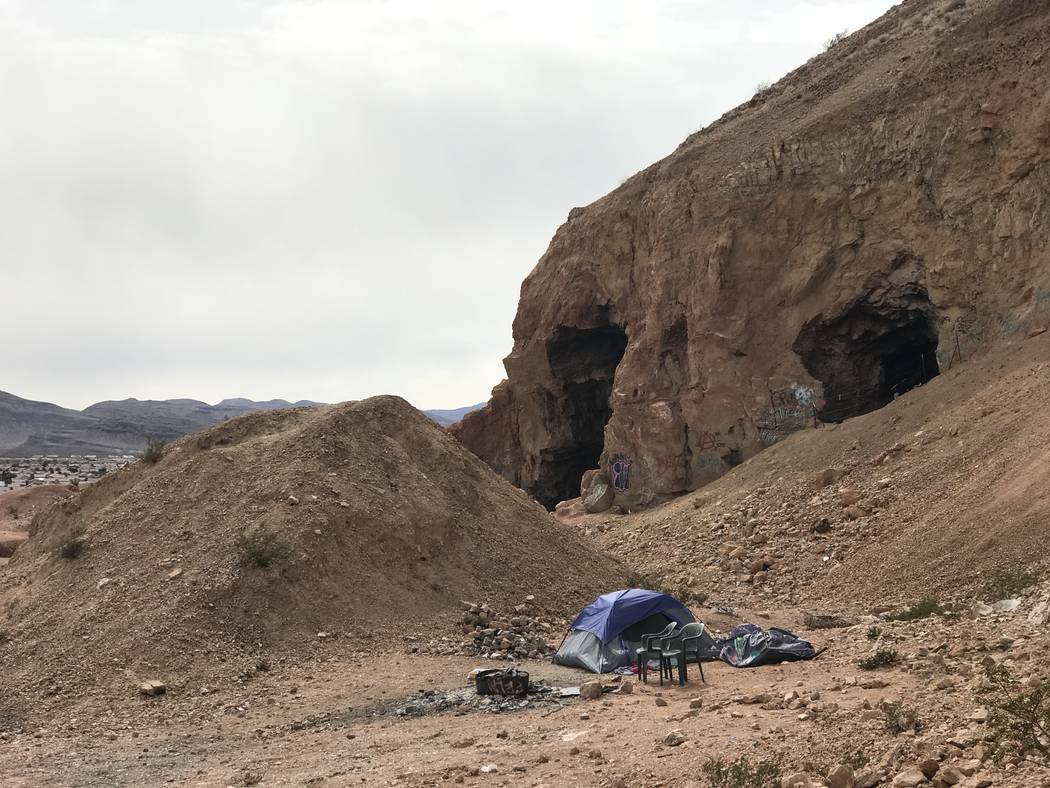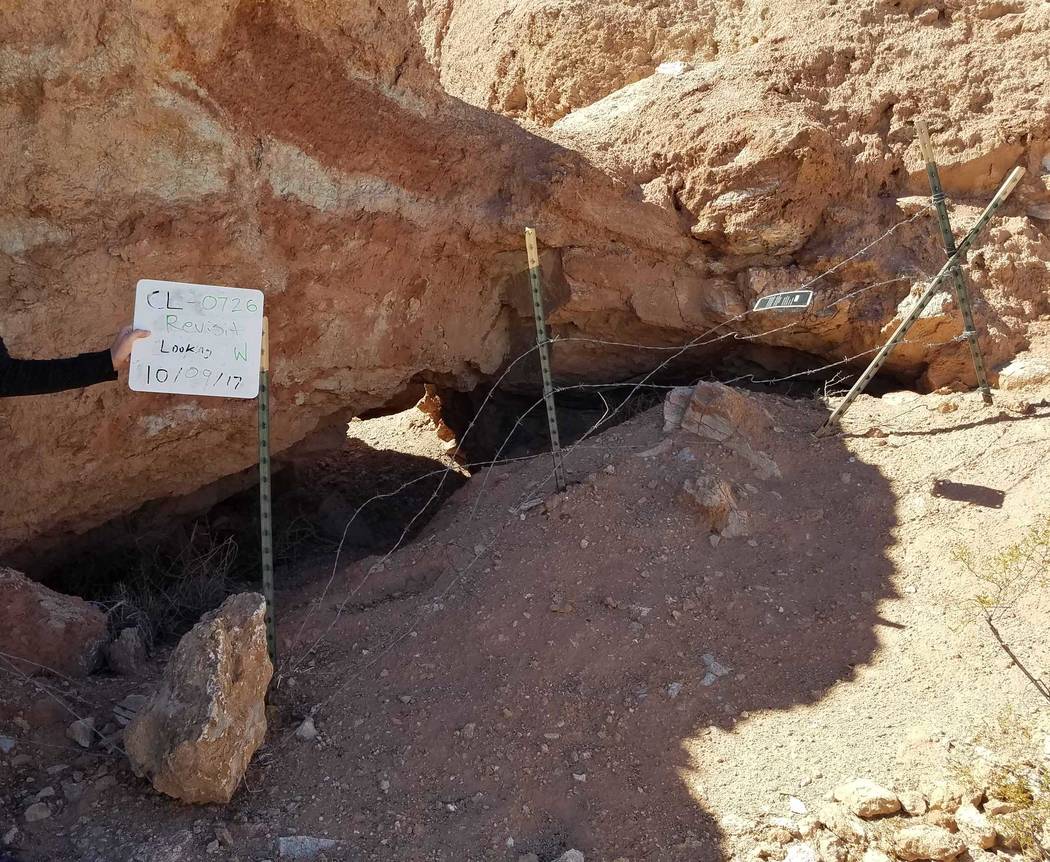Trails might replace southwest Las Vegas Valley mine shafts




Southwest valley residents could one day hike or ride horses through a sprawling desert park with a hilltop visitor center overlooking the city.
First , state and Clark County officials need to back-fill several dozen abandoned mine shafts peppering the future park site on county-owned land west of Fort Apache and Warm Springs roads.
On April 2, crews will begin back-filling at least 40 shafts that were cut into Gypsum Ridge during the the early 20th century. The work is expected to take about a month and cost roughly $250,000 — $150,000 of it from Clark County and the rest from the Nevada Division of Minerals’ Abandoned Mine Lands Program.
Robert Ghiglieri, head of the state program, said the safety hazard posed by the abandoned mine openings has only increased as residential development has encroached on the once-isolated site.
“It’s unusual for us to be dealing with houses within hundreds of feet of one of our sites,” Ghiglieri said.
The county took ownership of the 1,221-acre swath of Gypsum Ridge from the federal government in 2003 as part of the sweeping Clark County Conservation of Public Land and Natural Resources Act passed by Congress the previous year. The act requires the county to develop the property “as a public park or as part of a public regional trail system.”
A conceptual plan produced by the county in 2012 shows a network of hiking and equestrian trails winding around and along the ridges and past some of the historic mine works. The plan also envisions a visitor center or nature center near one of the largest mine openings on the property.
But at this point, said Clark County spokesman Dan Kulin, the conceptual plan is just that: a concept.
“We have long-range plans to put hiking trails in that area, but no specific funding or timeline for that project,” Kulin said.
Plenty of people are already using Gypsum Ridge for recreation. Ghiglieri said he sees people hiking around — and sometimes into — the abandoned mines almost every time he is there, which is all the more reason to fill the old shafts in.
Though the openings have been there for decades and seem reasonably stable, Ghiglieri said, there is plenty of evidence of significant rockfalls in and around the caverns. In one case, safety workers installed a barbed-wire fence across the mouth of a horizontal shaft only to have a boulder weighing at least 50 pounds fall down and collapse the fence.
Other fences and warning signs in front of the shafts have been vandalized or torn down at least 70 times over the past four years.
According to the Division of Minerals, the Arden gypsum mine operated on Gypsum Ridge from 1909-31. The last active mining claim on the property expired in 2012, Ghiglieri said.
Workers will begin by improving the roads leading to the mine shafts so they can bring in the heavy equipment needed to fill each shaft with a plug of dirt and rocks at least 10 feet thick.
The Nevada Department of Wildlife has already inspected the caverns and found “little to no sign” that they are being used by tortoises, bats or other animals, Ghiglieri said. The site is so heavily disturbed and attracts so many human visitors that wildlife appears to avoid the shafts, he said.
As of a few weeks ago , at least one person was living inside the largest of the caverns, where he was constructing a residence for himself using tents, scrap wood and even some windows salvaged from a big-box hardware store.
Homeless-outreach workers tried to talk the man into moving out of the shaft and into an assistance program, Kulin said.
None of the old mine openings will be back-filled until all have been thoroughly checked for people and animals, Ghiglieri said.
Contact Henry Brean at hbrean@reviewjournal.com or 702-383-0350. Follow @RefriedBrean on Twitter.













